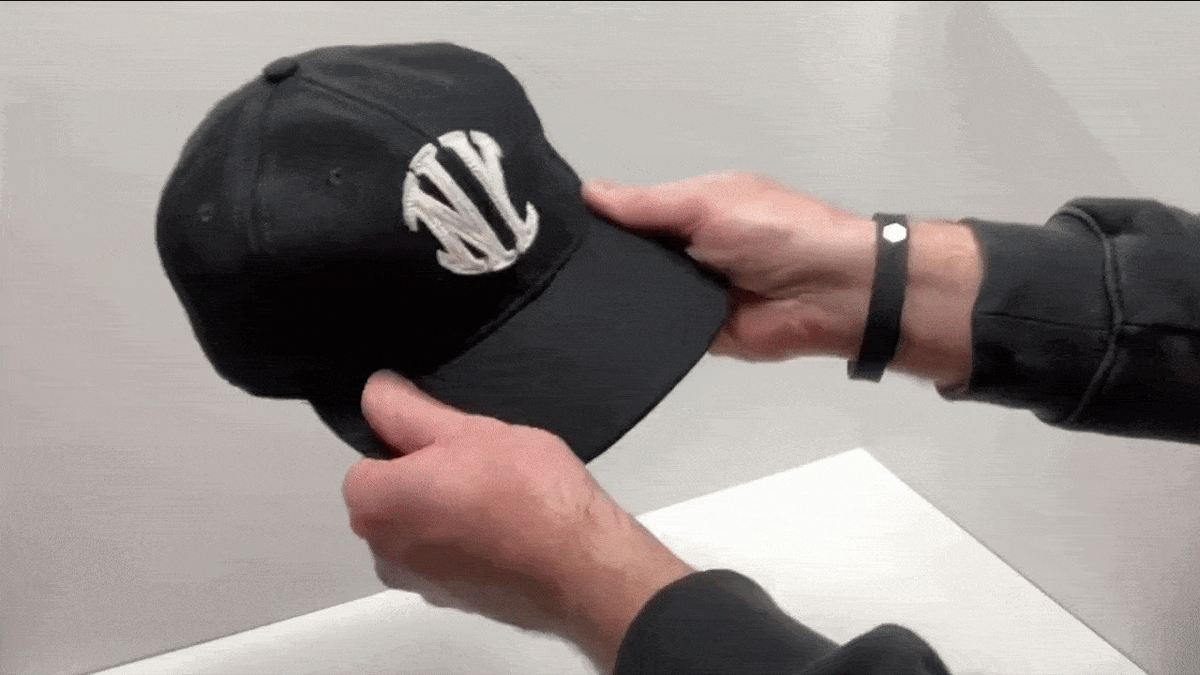

How to Tell If Your Hat Brim/Visor Is Cardboard or Plastic
Knowing whether your baseball cap brim is made from cardboard or plastic is key to cleaning and maintaining it properly. The wrong method can lead to a permanently soggy brim.
Despite how important this is, there’s very little clear information online about how to check what your brim is made of and how to clean it safely based on that.
That’s why we’ve put together this guide and video to show you exactly how to identify your brim type and avoid common mistakes.
Hat Brim - Back to Basics
It’s safe to fully soak the brim during hand washing if it’s plastic.
But if the brim is made from cardboard, soaking will cause it to lose stiffness and become soggy. Once that happens, there’s no real way to fix it; the only permanent solution is to replace the brim.
Starch or similar treatments might temporarily improve stiffness, but it won’t return to its original state.
Different Types of Hat Brim Materials
Cardboard

Cardboard, also known as paperboard, was the standard brim material in vintage baseball caps. It was lightweight, affordable, and easy to shape, which made it a practical choice for early manufacturers.
While many original caps used some form of cardboard, most modern reissues or heritage reproductions now use plastic instead, offering improved durability while preserving the original look.
HDPE/Foamed HDPE

Most baseball hat manufacturers now use plastic brims made from high-density polyethylene (HDPE).
These are die-cut from flat sheets, then heat-moulded into the desired curve. Some brands use a foamed version of plastic, made by injecting air into the material to create a rigid foam.
This approach is often more cost-effective than solid plastic but still provides the same water-resistant qualities.
Resin fibre blend

The final category is the resin fibre blend, which New Era now commonly use. This material combines plastic and cardboard, offering a balance of flexibility and durability.
The cardboard fibres give it softness, shape memory, and a more natural feel, while the plastic adds toughness and water resistance.
New Era has used this blended visor construction in many of their caps for over 20 years.
How to Tell What Brim Material is in Your Hat
Now that you understand the different visor materials, how can you figure out what’s inside the caps you already own? Here are a few simple ways to tell.
Feel
The feel of the brim is a major indicator. Gently flex it and see how it responds. If it’s plastic, it will spring back quickly and hold its shape. In contrast, cardboard tends to give more easily and may not return to shape as reliably.
Brand
You can also get clues from the brand of the hat. As mentioned earlier, New Era has been using a plastic–fibre blend for over 20 years, and many other brands have followed suit.
Brands like 47 Brand, Mitchell & Ness, and Supreme all use some variation of a plastic brim. Even vintage-focused manufacturers like Ebbets Field Flannels mostly use plastic brims. The only exceptions are their soft-brim range, which is clearly labelled.
The standard New Era plastic and cardboard blend doesn’t spring back as forcefully as plastic does. You don’t have to steam this visor quite as long as you would a pure plastic visor.
47 Brand’s plastic visor has a sharper sound when tapped. It will also spring back a little bit more forcefully when you try to flex it. The pure plastic visor has a higher softening temperature; you can leave it in the steam just a few seconds longer than a standard New Era cap.
A completely soft visor, as shown in the gif, makes a dull sound when you tap it. You can see how easily the cardboard visor flexes.

Brim Care
How to keep your hat brim clean
Since the brim is the most handled and exposed part of the cap, it tends to get dirty quickly. Using a fabric protectant is a good preventive measure — it helps repel stains and dirt, and makes cleaning easier when needed.
For regular upkeep, brushing is the most effective method. Pay close attention to the crease where the brim meets the crown, as this area often collects dust, lint, and grime.
Click here to watch our hat brushing tutorial to learn how to brush yours properly.
Storing your baseball caps in a safe place is essential to keeping them in ready-to-wear condition, whether it's in bin storage, a cap carrier, or inside your closet on a shelf. The main goal is to keep it away from dust and accidental spillages.
We hope this has helped you to determine the material of your visors.
